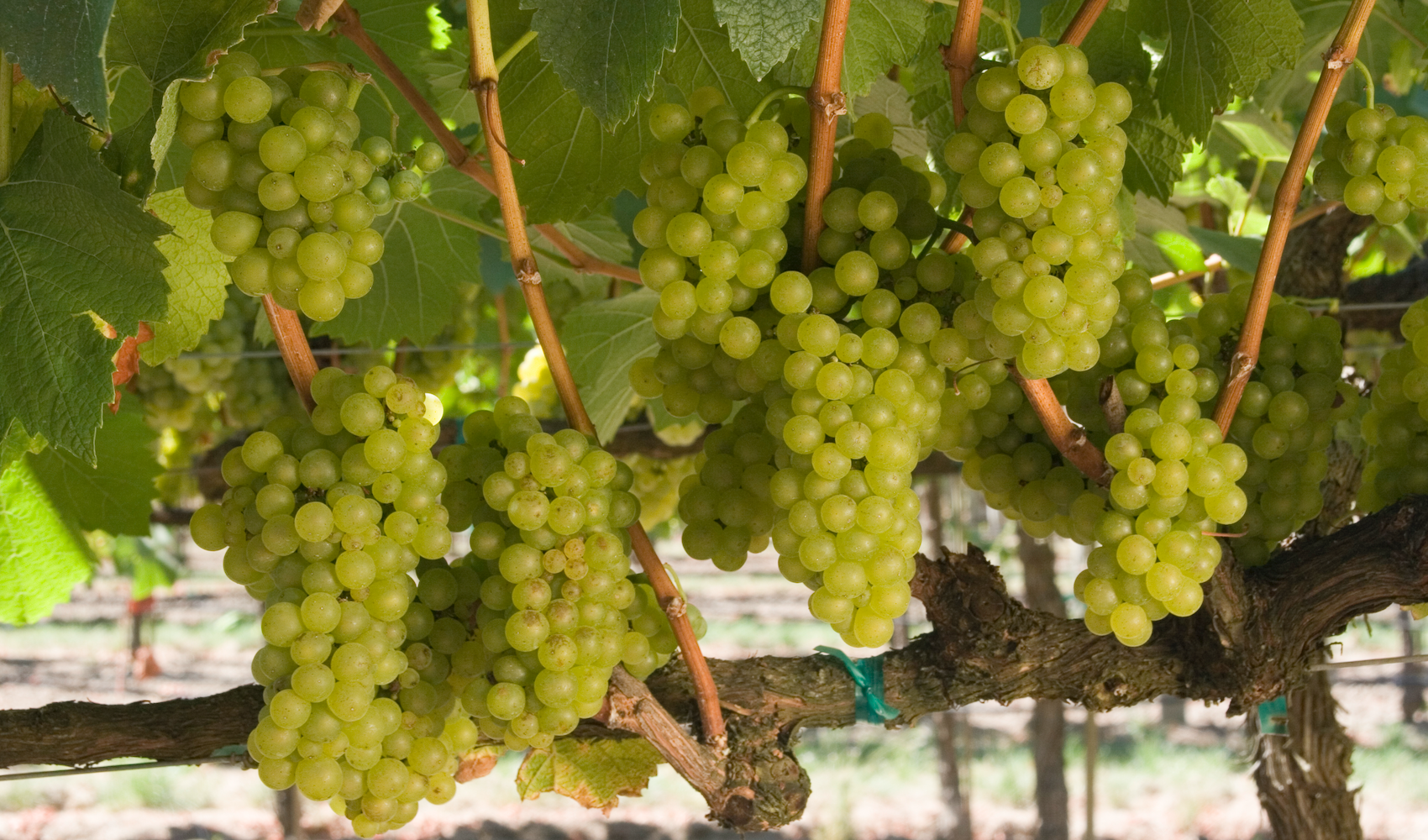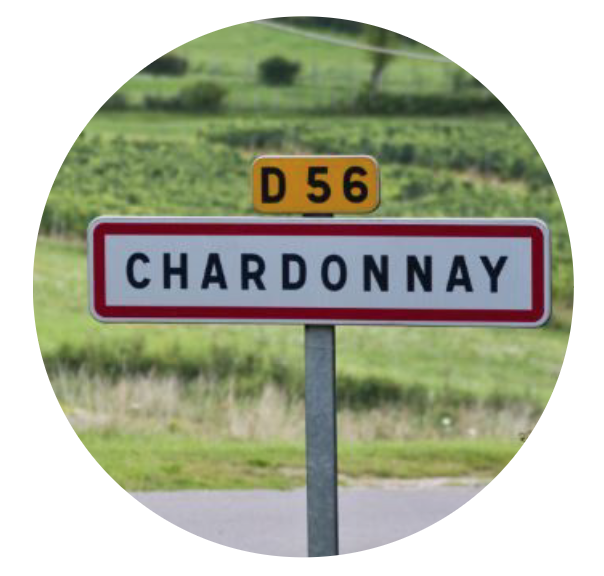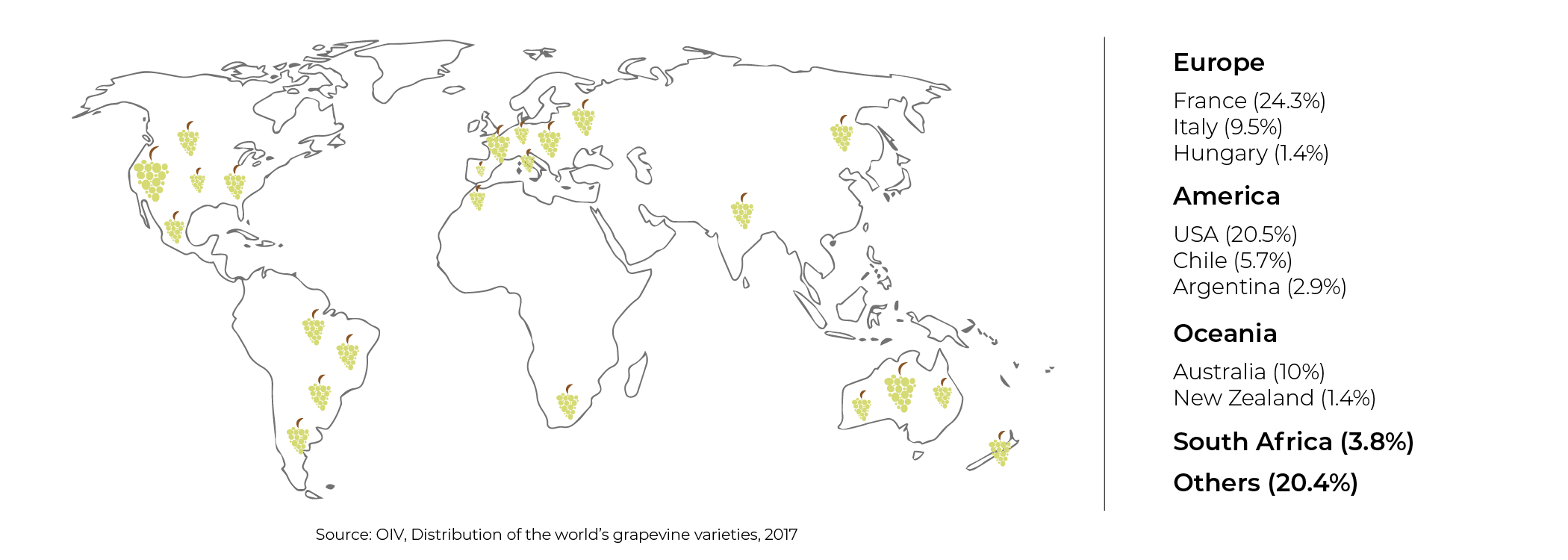
Grape 101: Your Simple Guide to Chardonnay
As one of the most popular grape varieties in the world, Chardonnay is to white wines what Cabernet Sauvignon is to reds. Its ability to adapt to different soils and climates (a.k.a. terroirs) make it one of the most planted grapes in the world, and its versatility produces a wide range of styles that virtually meet every consumers’ taste.
From crisp, clean and fruity to rich, creamy and oaky, Chardonnay has many different faces. As much as we could elaborate on all of them, this article aims first at providing a clear and concise overview of the grape and its different styles so we can all make more informed choices in the future.
GRAPE ORIGINS:
Although there is little information on when exactly the grape was introduced to winemaking, genetic research shows that Chardonnay is the result of a crossing between Gouais Blanc and Pinot Noir. The grape originated from the region of Burgundy in France, where local peasants heavily cultivated both grapes.
DID YOU KNOW?
There is a small village called Chardonnay in the department of Saône-et-Loire near Burgundy, and it is said that the varietal got its name from it.
With its unique ability to adapt to different soils and terroirs, Chardonnay quickly expanded throughout Europe and across the globe to become one of the most planted grapes in the world.
CHARDONNAY PLANTINGS WORLDWIDE :
Today, with over 210,000 ha (520,000 acres) of vines across 41 countries, Chardonnay is the second most planted white wine varietal in the world after Airen, a not-so-popular varietal from Spain used in production of white wine and brandies.
TASTE PROFILE :
As versatile as Chardonnay can be, the following taste profile serves as a generic, overall introduction to the grape.

WINE STYLES :
Although there are many different (and unique) styles of Chardonnay, most of them will somehow fall into one of the following categories depending on the soil(s), climate(s), winemaking technique(s) and aging process(es) involved.
Crisp & mineral:
Crisp and mineral Chardonnays are often referred to as the purest expression of the grape as they focus on the “raw” product and do not feature any other fermentation and/or oak-related flavors. They are mostly characterized by a medium to high acidity along with an array of mineral and floral aromas (Chalk, Flint, Acacia, Chamomile,…).
A few regions/appellations to look for:
- Chablis AOP (my personal favorite of all time)
- Western Australia: Margaret River, Swan District
- Sonoma Coast
Fresh & fruity:
The Fresh and fruity expressions of Chardonnay are quite ubiquitous and can be found pretty much anywhere the grape is cultivated. Flavors and aromas will vary from one Chardonnay to the next and range from citrus to tropical fruits depending on the soils, climates and ripeness level of the grape.
A few regions/appellations to look for:
- Bourgogne AOPs, Languedoc AOPs
- Mendoza (Argentina)
- Casablanca Valley (Chile)
- Gisborne (New Zealand)
Rich & Creamy:
Rich and creamy Chardonnay are also quite common throughout the world and can either result from a specific fermentation process or from the influence of oak aging. While the buttery texture and taste is the result of what is called the Malolactic fermentation (the transformation of tart-tasting malic acids into soft-tasting lactic acids), aromas of Coconut, vanilla and toast result from the influence of oak during the aging process.
A few regions/appellations to look for:
- Burgundy AOPs (Meursault, Côte de Beaune)
- California AVAs: Napa Valley, Paso Robles
- Puglia IGT
Sparkling:
Whether it is blended or on its own, Chardonnay is one of the most ubiquitous varietals used in the production of sparkling wine. When blended, the grape brings structure and richness to the wine. When on its own, it produces crisp and aromatic sparkling wines also referred to as “Blanc de Blancs”.
Appellations to look for:
- Champagne AOP
- Franciacorta DOCG
- Loire Valley AOPs: Saumur, Anjou
MAIN AROMAS:
From lemon peel to vanilla, there are as many flavors and aromas to Chardonnay as there are distinct wine styles and origins. While a barely ripe chardonnay from a cooler climate will yield flavors of green apple and lemon zests, a very ripe Chardonnay from a warmer climate will feature flavors of pineapple, mango, and bananas.
Additionally, both the fermentation process and the oak aging will play an important role in the flavor profile of Chardonnay, providing aromas ranging from vanilla to coconut.
Here is your simplified guide to Chardonnay’s main aromas:
 Primary aromas:
Primary aromas:
- Citrus (Lemon, Grapefruit, etc): Common in unoaked, less ripe Chardonnays from both cool and warm climates (e.g. Chablis, Marlborough, Margaret River)
- Stone fruits / Tree fruits (Apple, Peach, Apricots, etc): Common in unoaked, ripe Chardonnays from either cool or warm climate regions (e.g. South Africa and Western Australia)
- Tropical fruits (Banana, Pineapple, Mango, etc): Typical aromas for warmer climate Chardonnays picked very ripe.
Secondary aromas:
- Butter: Not only used to describe a texture, butter is also a key aroma of many chardonnays that results from the malolactic fermentation. While this is not specific to any wine producing region, look for clear indication and descriptors (like “buttery” or “creamy” or “rich”) on the bottle to easily identify these ones.
- Oak flavors (Coconut, Vanilla, Toasted bread, etc): Oaky Chardonnays are produced around the world. However, several regions such as Meursault, Napa Valley or Northern Italy are particularly known for it.
FOOD PAIRINGS :

Best matches for sparkling Chardonnays:
- Oysters, Caviar
- Light amuse-bouche and small bites
- Sushi
- Desserts (tarts, pies, cakes, fruit salads,…)
Best matches for crisp & mineral Chardonnays:
- Raw & cooked shellfish (lobster, crab, prawns, oysters)
- Grilled fish (red snapper, trouts)
- Salads and vegetables
Best matches for fresh & fruity Chardonnays:
- Steamed fish (salmon, cod)
- Roasted or grilled white meat (pork, chicken, veal)
- Risotto and pasta with creamy white sauces
Best matches for rich & creamy Chardonnays:
- Foie Gras
- Grilled shellfish (lobster, crab, prawns, scallops) or fish “en sauce”
- Roasted chicken and game, Steak “en sauce”
- Soft cheeses
Header photo (Chardonnay Grapes): Copyrights @California Wine Institute
Infographics & Icons: Copyrights @SpiritedSomm
For any comment or additional information, feel free to contact me directly !




 Primary aromas:
Primary aromas: 